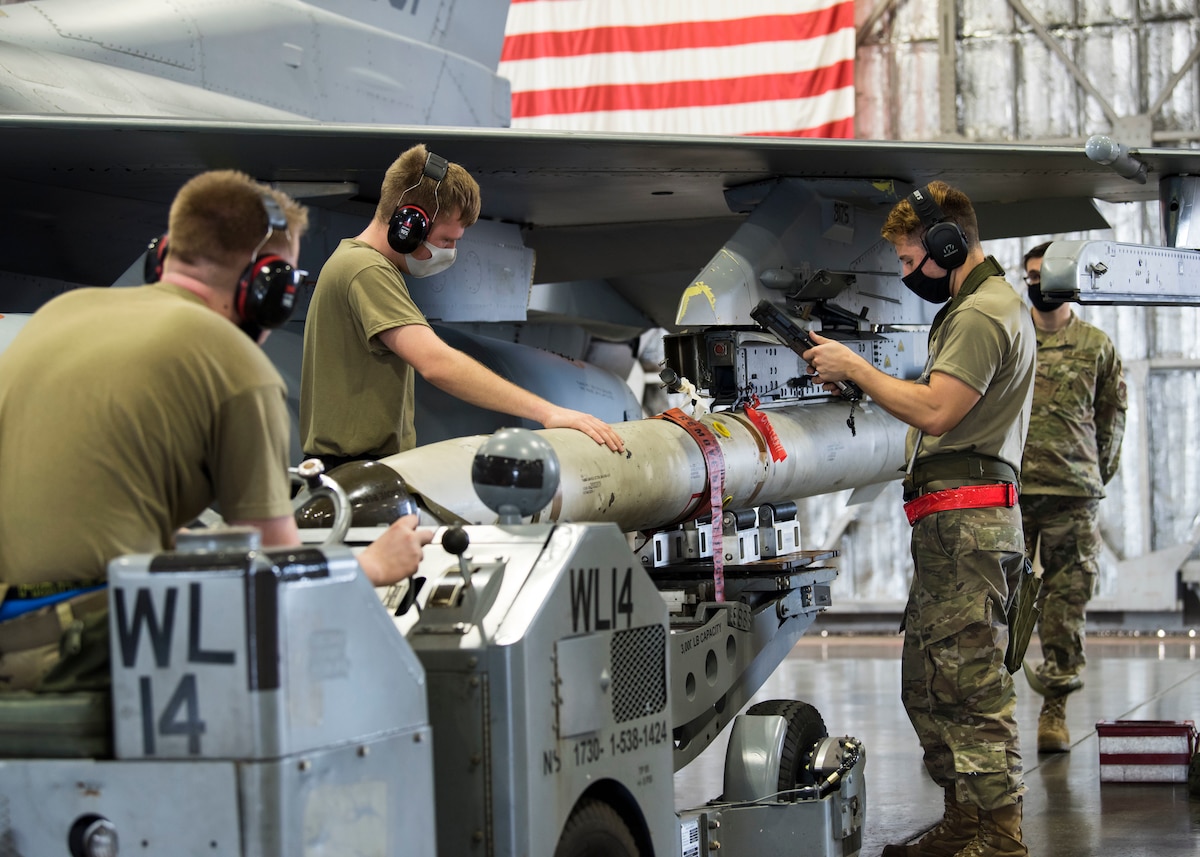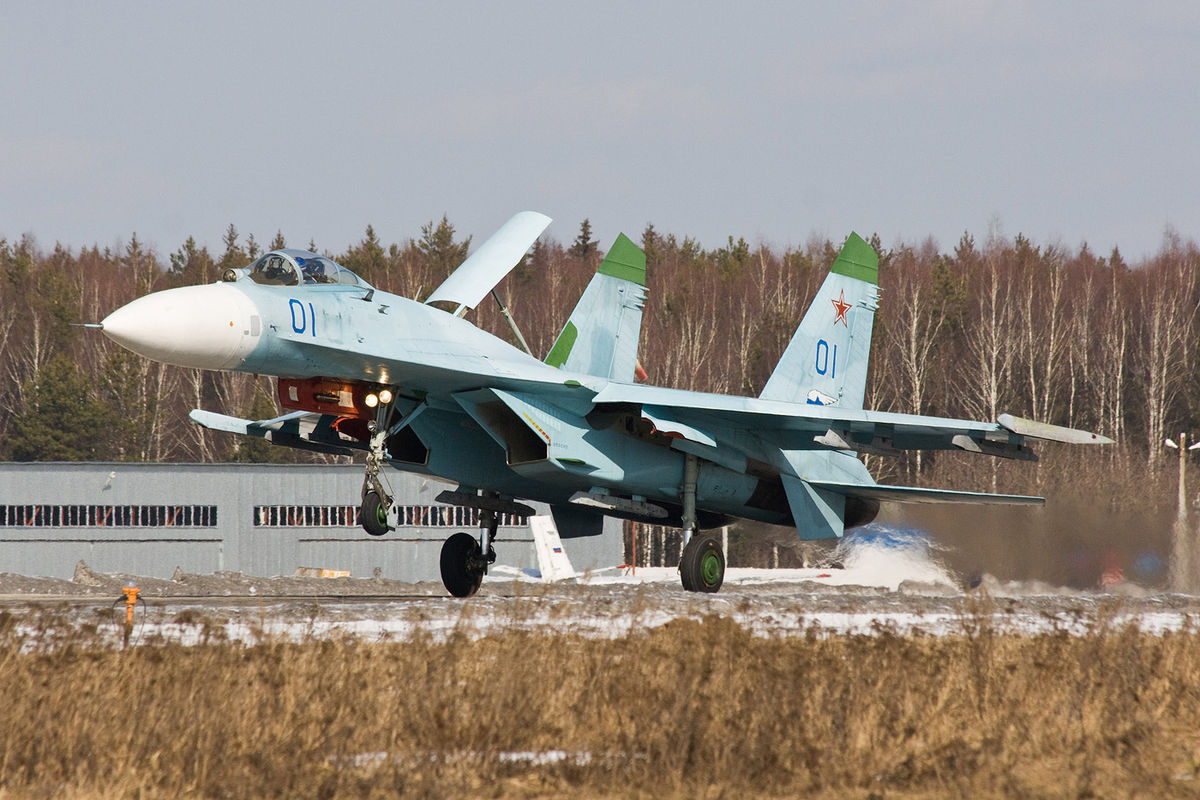The US has confirmed providing High-Speed Anti-Radiation Missiles (HARM) to the Ukrainian armed forces to knock out Russian air defense systems. Images have surfaced on social media showing what appears to be the wreckage of an AGM-88 HARM, allegedly from the Ukrainian battlefield.
The US Under Secretary of Defense for Policy, Colin Kahl, said in a press conference on August 8 that the US has sent “a number of anti-radiation missiles that can be fired off of Ukrainian aircraft that can have effects on Russia radars and other things.”
Kahl’s remarks came shortly after Russian Telegram channels released the images of what is allegedly the destroyed AGM-88 HARM, and the missile in question was reportedly fired at a Russian position.
Russian channels have posted images of what appear to be the remains of an AGM-88 HARM antiradiation missile. A fragment of the HARM’s BSU-60A/B stabilization fin can be seen in the wreckage.
The missile was reportedly fired at a Russian position. pic.twitter.com/GCNA55CJdj
— OSINTtechnical (@Osinttechnical) August 7, 2022
Also, in late July, Ukraine’s Defense Minister Oleksiy Reznikov also said that Ukraine would get “special anti-radar missiles,” which would allow the Ukrainian armed forces to effectively destroy Russia’s radar system, “essentially blinding the enemy” and gaining “an advantage for a counteroffensive”
Anti-Radiation Missiles – A Game Changer?
Anti-radiation missiles would mean a significant upgrade for the Ukrainian military, as there have been reports in recent months about Russian air defense systems that have limited the capability of the Ukrainian air force to operate in the eastern Donbas region.
“They created in the Donbas a powerful [anti-access/area denial] zone, and in these circumstances, it is hazardous to fly over them,” an unnamed Ukrainian official was quoted as saying by Foreign Policy in May. “In low altitude, the Russian air defense is waiting for us,” the official continued.
Last night, a Bayraktar TB2 armed drone of #Ukrainian Air Force was shot-down by a Pantsir S1 short-range air defense system of #Russian Army. It was flying from direction of #Kharkiv toward the areas under occupation of #Russian forces. pic.twitter.com/nCHIpaIB06
— Babak Taghvaee – The Crisis Watch (@BabakTaghvaee1) July 23, 2022
Also, in June, two Ukrainian fighter pilots, in an interview, said that even the world-famous Turkish-made Bayraktar TB drones that were initially instrumental in destroying Russian armored columns and troops marching toward the capital Kyiv have now become “almost useless” in the face of threats posed by Russian air defenses in the eastern Donbas region.
Therefore, the AGM-88 HARM is a significant addition to the Ukrainian arsenal of weapons that could potentially be a game-changer, just like the HIMARS Multiple Launch Rocket System (MLRS) provided by the US.

The HIMARS provides Ukraine with a rapid precision strike capability at standoff ranges without the need for air power, thereby allowing the Ukrainian military to compensate for the small size of its air force.
However, the AGM-88 would take Ukraine’s abilities to another level by enabling the Ukrainian military to destroy the Russian air defenses’ radars and allow the fighters to operate safely in eastern Donbas, supporting ground troops.
AGM-78 High-Speed Anti-Radiation Missile
Texas Instruments initially developed the AGM-88 HARM as a replacement for the AGM-45 Shrike and AGM-78 Standard ARM system. Raytheon Corporation took over its production after acquiring Texas Instruments’ defense production business.
The HARM missile gets the target parameters from the launch aircraft before it is launched, which the rocket uses together with the relevant altitude data to process incoming Radio Frequency (RF) energy for target acquisition and guidance.
The terminal homing capability of the HARM missile provides the launch aircraft with the launch and leave capability.

The missile is said to be capable of singling out the desired target from several radio frequency emitters. It has a proportional guidance system in its nose section, consisting of a fixed antenna and seeker homes on enemy radar emissions.
There are three variants of the missile, the AGM-88A, B, and C, of which the warhead sections of variants A and B contain 25,000 pre-formed steel fragments, an explosive charge, a fuze, and a fuze booster.
The warhead section of the variant C contains 12,845 tungsten fragments and an improved explosive charge which provides greater overall lethality.

These warhead sections damage the target’s antenna and waveguide system to render it inoperative. The missile is propelled by a smokeless, solid-propellant, dual-thrust rocket motor.
However, the question remains as to how exactly the Ukrainian military is employing the AGM-88 if it has received this missile from the US.
Deployment Of AGM-88 HARM In Ukraine
The US Navy and Marine Corps employ the missile on their F/A-18s and its electronic warfare variant, the EA-18G Growler aircraft, while the US Air Force (USAF) uses its specialized F-16s, equipped with the HARM Targeting System (HTS), to deploy the missile.
The Italian Air Force also deploys the missile using its Tornado Electronic Combat aircraft.

However, the Ukrainian military only has its aging fleet of MiG-29, Su-24, Su-25, and Su-27, all soviet-made platforms, lacking the appropriate interfaces to communicate targeting information from the launch aircraft to the western-made missile and the missile status back to the aircraft.
It is possible that either the Ukrainian aircraft have been modified to incorporate the AGM-88, or the Soviet-era aircraft from NATO states could have possibly been supplied to Ukraine in a clandestine transfer.
These Soviet-era aircraft belonging to NATO states are said to have been upgraded with NATO-standard bus architecture and adaptable avionics that could interface with the HARM.
Experts Analyze
EurAsian Times spoke to experts to examine the possibility of modifying Soviet-era aircraft and, more importantly, its feasibility.
Thomas Withington, an expert on electronic warfare, radar, and military communications, told the EurAsian Times that modifying a Soviet-origin aircraft to deploy the AGM-88 is possible but quite difficult.

“Firstly, the missile and the aircraft’s mission computer would need to be able to ‘talk’ to one another. In the west, this is achieved with protocols such as the MIL-STD 1553 serial databus,” Withington told EurAsian Times.
He explained that the MIL-STD 1553 serial data bus is like a kind of ‘USB socket’ for military aircraft enabling the aircraft computer to recognize a weapon deployed on the aircraft and to communicate with it.
“What this means is that the pilot can send firing coordinates etc. to the weapon via the computer and that the weapon can also share its status with the pilot,” Withington said.
However, he further noted that he does not know of the AGM-88 having ever been deployed on a non-western combat aircraft. Furthermore, Withington said that while “some Soviet aircraft have received NATO-style bus architecture,” he does not believe this has been the case for Ukrainian aircraft.
EurAsian Times also spoke to veteran Jaguar fighter pilot Squadron Leader Vijainder K. Thakur, who explained that to launch an anti-radiation missile from a fighter aircraft, the weapon launch computer of the launching aircraft would need to be fed the precise coordinates of the Radio Frequency (RF) emitter, which generally involves carrying a detection and ranging pod along with the anti-radiation missile.
He noted that “Ukraine, an experienced user of Russian technology, likely has the expertise to interface the detection pod as well as the missile with the weapon launch computer system of its MiG-29.”
“It is possible that coordinates of the emitter could be fed to the launching aircraft over a data link from US electronic eves dropping aircraft flying close to Ukrainian airspace. It’s something that the US would not acknowledge, but Russia would know,” Thakur further said.
Another possibility is that the US could have had some Soviet-era anti-radiation missiles like the Kh-31 or Kh-58, acquired as part of its Foreign Material Exploitation efforts or through other means, and perhaps some of these might have been provided to Ukraine.
After the fall of the Soviet Union, there was a thaw in US-Russian relations in the 1990s, and during that period, McDonnell Douglas (and later Boeing) worked with Russian firm Zveda-Strela to develop a derivative of the Kh-31 for the US military to use as high-speed targets.
It remains unknown, though, if the US military still has any of those aerial targets left.
If the anti-radiation missile provided to Ukraine is not the American AGM-88 but instead the old soviet-era Kh-31 or Kh-58, or both, then the question remains where the images of the allegedly destroyed AGM-88 came from.
The AGM-88 HARM is a very old missile that has been in use for over a decade as part of several military operations in various different warzones, and therefore it is possible that these missiles, either destroyed or intact, must have found their way into the hands of the Russian military.
So, it is also possible that the Russian Intelligence agencies could have released an older image of a destroyed HARM as part of a disinformation campaign.
- Contact the author at tanmaykadam700@gmail.com
- Follow EurAsian Times on Google News




